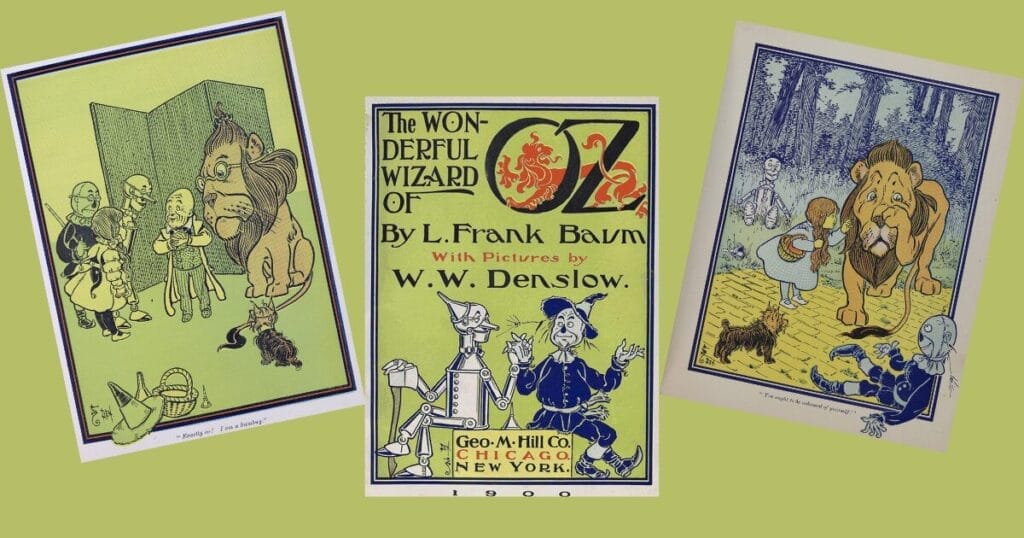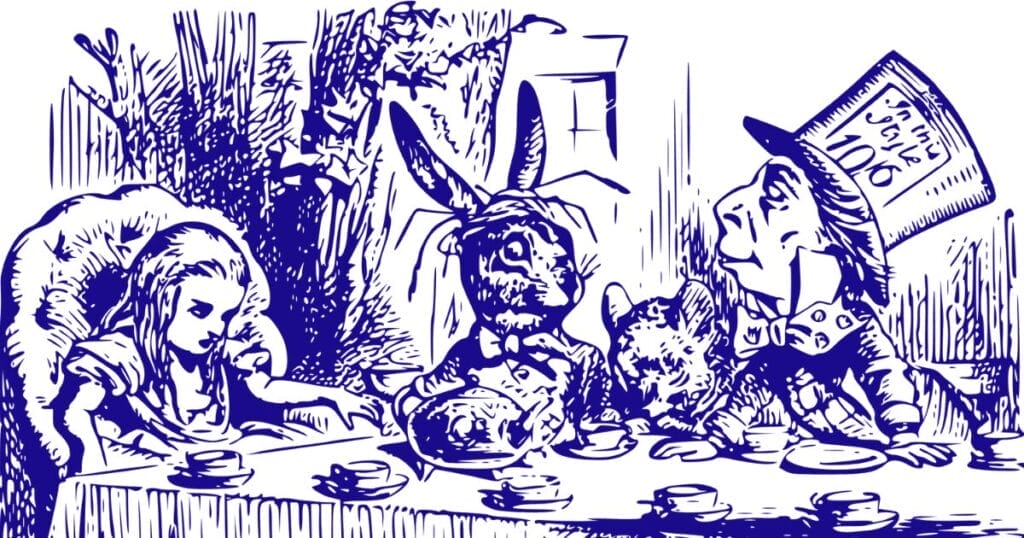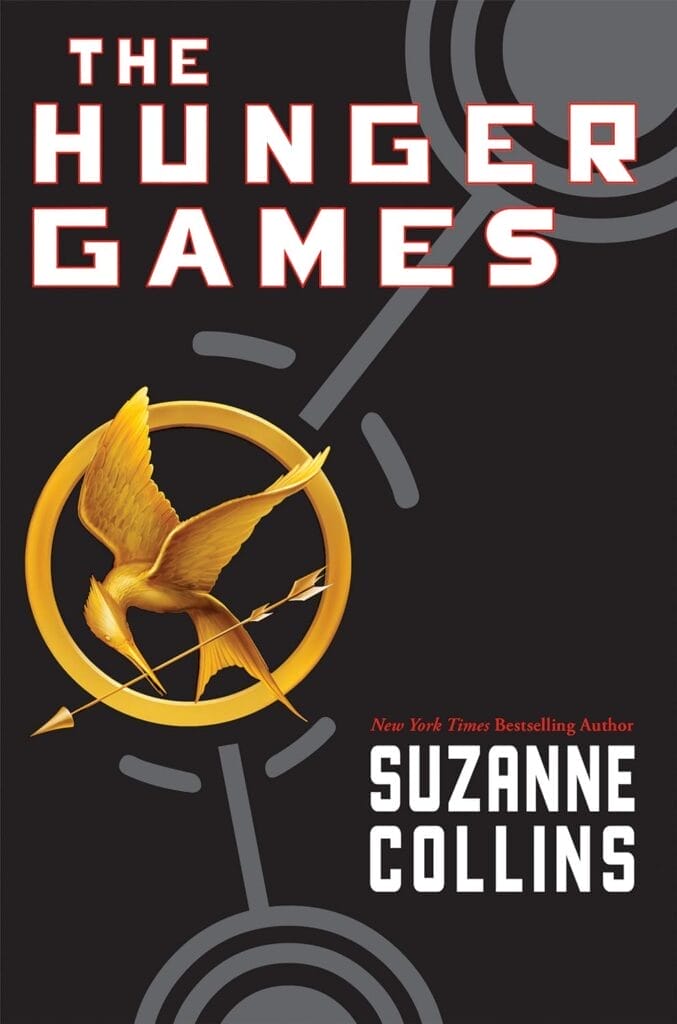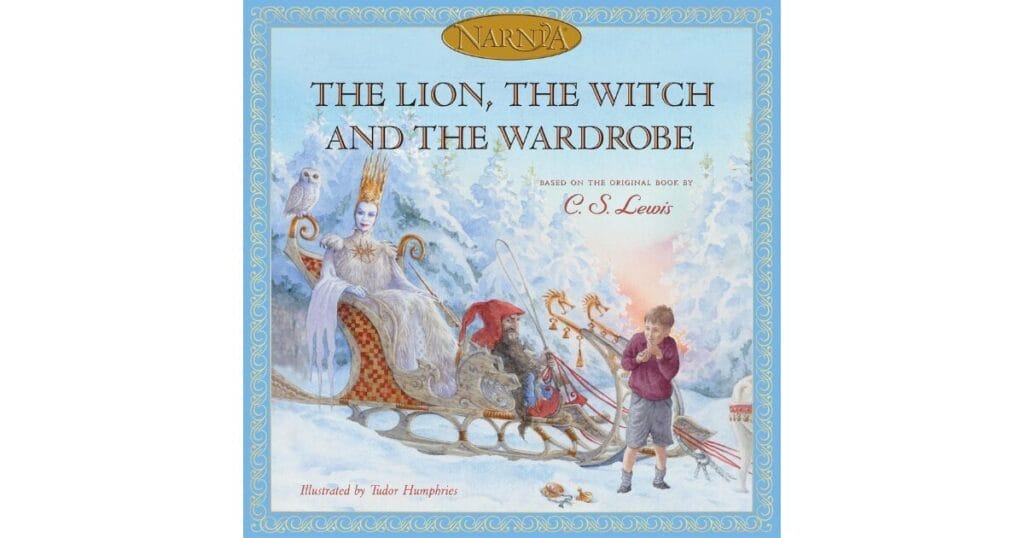Ah, the hero’s journey. Some of the best hero’s journey examples are recognizable as the tried-and-true storytelling structure that creates the backbone of our favorite movies, books, and TV shows. You may not be aware of it, but most of your favorite stories probably follow the hero’s journey.
If you’re an author, you’re may also familiar with using the hero’s journey to outline your story. An outline can make or break a draft. Thankfully, the hero’s journey can be as rigid or flexible as you need for your story.
But let’s slow down. What is the hero’s journey? And how can we learn to identify hero’s journey examples in the stories we watch?
Below we’ll break down the structure of the hero’s journey when writing, how to use it to build your stories, and literary examples of the hero’s journey in practice.
When looking at examples of the hero’s journey, you’ll want to consider:
What are Some Hero’s Journey Examples in Books?
The hero’s journey is a narrative structure popularized by Joseph Campbell in his 1949 book The Hero With a Thousand Faces. Campbell was partly inspired by Carl Jung, who believed in overarching archetypes: the mother, the father, etc. Instead of creating a new story structure, Campbell identified common beats and pieces seen in stories across genres and types.
In Christopher Vogler’s book, The Writer’s Journey, he offers the following insight into the hero’s journey:
At heart, despite its infinite variety, the hero’s story is always a journey. A hero leaves her comfortable, ordinary surroundings to venture into a challenging, unfamiliar world. It may be an outward journey to an actual place: a labyrinth, forest, or cave, a strange city or country, a new locale that becomes the arena for her conflict with antagonistic, challenging forces.
But there are as many stories that take the hero on an inward journey, one of the mind, the heart, the spirit. In any good story the hero grows and changes, making a journey from one way of being to the next: from despair to hope, weakness to strength, folly to wisdom, love to hate, and back again. It’s these emotional journeys that hook an audience and make a story worth watching.
Vogler, C. (2020). The Writer’s Journey – 25th Anniversary Edition: Mythic Structure for Writers. Michael Wise Productions. (Original work published 1998)
The hero’s journey isn’t adapted in every story. While it does apply to many, this isn’t a universal structure—not every TV show, movie, or book will fall into this, and yours doesn’t have to, either. That said, hero’s journey examples abound in storytelling culture and have since before Campbell wrote his book.
In order for the hero’s journey to work, the structure must rely heavily on setup and payoff. This includes beats that audiences have grown to expect. In many ways, these familiar plot points and the order they’re in are what we know and understand as storytelling.
The Steps in Every Hero’s Journey Example
We can break the hero’s journey into three big chunks: the departure, the initiation, and the return—your classic three-act structure. If you don’t like a detailed outline, this might be enough.
Let’s go a little deeper and look at the whole thing, piece by piece.
1. The Ordinary World
This is our picture of the regular world before anything comes along to muck it up. We get a shot of the characters, the setting, what the characters want and need, and maybe a little bit of what tensions and challenges exist in this world. The characters aren’t being challenged yet, themselves, but this is where we learn about the world’s premise.
2. The Call of Adventure
Our hero is called to action. Maybe someone shows up at their door and asks them to go on an adventure, or they run into the love of their life–whatever it is, this is the part of the story where the character is asked to leave their state of normalcy and embark on an adventure.
3. Refusal of the Call
This doesn’t always happen, but sometimes, the hero will refuse the call at first. Doing this means the character must be thrust into the action against their will.
4. Meeting the Mentor
The hero has either gone off on an adventure or has been thrust into one–now, they get some sort of guide to take them through this new world. This new guide is a mentor character, and they’ll often have something to help our hero out along the journey. Think Gandalf or Hagrid.
5. Crossing the First Threshold
This is the point of no return! The hero has entered the unknown world, and there’s no going back to the way things were before. This is the start of the second act or the initiation.
6. Tests, Allies, Enemies
Also known as ‘the road of trials,’ this is the bulk of your novel or that big middle chunk that authors like to complain about. Your character is making friends, and enemies, facing trials, and adapting to the new world on their quest to achieve their goal.
7. The Ultimate Boon
This is the hero doing what they set out to do, or the climax of the piece. Everything in the novel culminates here, and everything afterward offers a resolution. This is the end of the second act, and from here, we transition into the third act.
8. Crossing the Return Threshold
It’s time to go back home. Sometimes, the journey back is a struggle unto itself, and sometimes it’s smooth sailing–this is our transition into the resolution.
9. Master of the Two Worlds
Our hero is now the master of the normal world and the new world. He or she can now move seamlessly between both worlds without being broken by either.
10. Freedom to Live
Now that the hero has mastered both the challenging, new world and the old world they came from, they have the freedom to live. The new world no longer poses a threat, and they have conquered the threat of defeat. Hurray!
Can a Nonfiction Book Have a Hero’s Journey?
Yes, all books, whether fiction or nonfiction, should include some type of hero in the story. This hero’s journey is what the book is about. Consider Donald Miller in his book Blue Like Jazz. Miller’s book is semi-autobiographical but he demonstrates his character arc and how he changes throughout the story. Even though his book is nonfiction, he applies the hero’s journey to his work in a compelling way to engage the reader and pull them deeper into his story.
Even with all that, there are still more steps to the hero’s journey we didn’t touch here. But this is more than enough to start getting into some examples, so let’s go!
Hero’s Journey Book Examples
Again, remember that not every story will fit perfectly into this structure. Sometimes things are moved around or interpreted differently, especially across genres. That being said, here are some book favorites that are good hero’s journey examples. Spoiler alert: these hero’s journey examples do give away key plot points and the endings of these stories, so if you haven’t read the books, you might want to skip those examples.
The Wizard of OZ by L. Frank Baum

The Ordinary World
Dorothy lives on a Kansas farm with her Aunt Em, Uncle Henry, and dog Toto.
The Call to Adventure
A cyclone rips through Dorothy’s Kansas town. When she and her dog Toto don’t make it to the shelter, they get swept up into the air when the strong winds pick the house up and spin it through the air.
Refusal of the Call
Meeting the Mentor
When the house lands on and kills the Wicked Witch of the East in the fanciful city of Oz, Dorothy meets the Good Witch of the North who tells her she must go to the City of Emeralds to meet the Great Wizard. She later meets Glinda the Good Witch of the South who tells her how to get home.
Crossing the First Threshold
Dorothy prepares a basket for her journey to the City of Emeralds and replaces her old leather shoes with the silver shoes that belonged to the Wicked Witch of the East. She then sets out to find the yellow brick road the Good Witch of the North told her would lead her to the City of Emeralds.
Tests, Allies, Enemies
On the journey, Dorothy meets the Scarecrow, the Tin Woodman, and the Cowardly Lion. She develops friendships with them and learns that each has their own set of fears and desires that they must battle.
Along the way, they meet beastly enemies like the Kalidahs, vicious wolves, flying crows, black bees, flying monkeys, fighting trees, and Hammer Heads. They also gain unexpected allies like a stork, a mouse queen, and friendly residents. Dorothy and her companions must face tests that force them to strategize, work together, and overcome their fears to accomplish great things.
The Ultimate Boon
After finally making it to the Great Wizard and making their requests, they are told that their wishes will be granted only after they kill the Wicked Witch of the East which is the last thing they believe they are prepared to do. But their desires outweigh their fears and they set out on another journey to find the Wicked Witch of the East to kill her.
Master of the Two Worlds
Dorothy and her companions conquer the enemies of Oz and gain the respect of the inhabitants of the kingdom.
Freedom to Live
The Tin Woodman, Scarecrow, and Lion all overcome their fears and receive their own kingdoms to rule. Dorothy finds out that the answer she’s been looking for to get back home has been with her all along.
Alice’s Adventures in Wonderland by Lewi Caroll

The Ordinary World
We’re introduced to Alice hanging out on a river bank with her sister who’s reading a book that Alice finds terribly boring.
The Call to Adventure
Alice sees a white rabbit with a pocket watch racing to an appointment. She decides to leave her sister and run off after the rabbit.
Refusal of the Call
Crossing the First Threshold
Alice escapes the rabbit’s house and enters the world of Wonderland.
Meeting the Mentor
Before her escape into Wonderland, Alice is stuck in the Rabbit’s house drinking and eating things that cause her to shrink and grow too big. When she escapes into Wonderland, she meets a caterpillar who instructs her on how she can choose what size she becomes. Throughout her journey, she meets other mentors/guides who help point her in the right direction including a Chesire Cat.
Tests, Allies, Enemies
Because everyone in the magical world of Wonderland is nonsensical, and their behavior is confusing to Alice, they can be seen as her antagonists. This includes the Pigeon, Mad Hatter, March Hare, Dodo bird, Duchess, Queen of Hearts, the King of Hearts, a Gryphon, Mock Turtle, and the Dormouse.
The Ultimate Boon
Alice’s adventure culminates with a strange trial that the Queen of Hearts is conducting. Throughout the ridiculous discourse, Alice becomes more confident in who she is and begins to reconsider how she feels about the craziness unfolding around her and she says as much. When the Queen of Hearts threatens her with beheading, Alice dismisses her boldly.
Master of the Two Worlds
Although Alice’s sister wakes her from her odd dream, her brief escape into Wonderland has caused a shift in how she views herself in the world. Her journey toward maturity has started to unfold.
Freedom to Live
Alice survives the odd imaginary adventure and in the end, sees it as nothing more than a “curious dream.”
The Hunger Games by Suzanne Collins

The Ordinary World
Katniss Everdeen lives in District Thirteen in Panem. The audience learns about the Hunger Games, and that the reaping is coming up.
The Call to Adventure
The reaping happens—Primrose, Katniss’s little sister, is selected.
Refusal of the Call
Katniss volunteers in place of Prim, putting herself in the Hunger Games instead.
Meeting the Mentor
Katniss and Peeta meet Haymitch Abernathy, who will be preparing them for the games.
Crossing the First Threshold
Our heroes go to the Capital, where they’re thrust into Capital life. The first aspect of this is optics—Katniss learns about how social games are played and how to move and perform for cameras. Then, she’s sent to the Games themselves, where she has to apply what she’s learned in the arena.
Tests, Allies, Enemies
This is the meat of the Hunger Games. Katniss buries Rue, escapes other tributes and works to save herself and Peeta from being killed.
The Ultimate Boon
Katniss and Peeta are the last tributes standing, and the Capital wants them to kill each other for the drama of it all. Thinking quickly, Katniss tells Peeta they’ll both eat nightlock berries, which will kill them both. The Capital doesn’t want to be without a winner, so they name Katniss and Peeta both victors.
Master of the Two Worlds
Katniss and Peeta return from the Games alive. Katniss has mastered performing for the cameras and surviving in the arena.
Freedom to Live
In the Hunger Games, this isn’t quite as clear-cut. Katniss is allowed to live but doesn’t know what’s in store.
Chronicles of Narnia: The Lion, The Witch and The Wardrobe

The Ordinary World
Siblings Peter, Susan, Edmund, and Lucy Pevensie live in the English countryside with an eccentric professor during World War II.
The Call to Adventure
One rainy day, the kids begin exploring the house, and the youngest, Lucy, finds a magic portal at the back of a wardrobe that leads to the mystical world of Narnia.
Refusal of the Call
Crossing the First Threshold
Each sibling represents a hero in the story with a personal journey. The youngest, Lucy, is eager to begin the journey into Narnia. Edmund knows that Narnia exists but initially refuses to admit what he knows to his older siblings. Finally, after resisting the possibility that there is a magical world, the two oldest, Peter and Susan, discover Narnia for themselves and decide to explore it.
Tests, Allies, Enemies
When their journey begins, the 4 siblings meet characters individually and as a group. Lucy meets the faun Tamnus first who deceives her initially but then protects her. Edmund meets the White Witch. They all meet Mr. and Mrs. Beaver, and Father Christmas.
Meeting the Mentor
Peter, Susan, and Lucy meet Aslan who promises to do all he can to save Edmund who has gone rogue after aligning himself with the White Witch who deceived him.
The Ultimate Boon
The four siblings fight alongside the Narnian army to defeat the witch’s soldiers as Aslan kills the White Witch.
Master of the Two Worlds
In the magical world of Narnia, Peter, Susan, Edmund, and Lucy become royalty and rule the kingdom well into adulthood. One day they come across the location where they first entered Narnia and find their way back into the wardrobe and back to the professor’s house where they become children again.
Freedom to Live
When they return to their world, hardly any time has passed, but their experiences of an internal war of the heart in Narnia have prepared them for the current real-world conflicts.
Hero’s Journey Examples Abound
Regardless of what genre you’re reading or writing, examples of the hero’s journey can be found in many stories. Even in nonfiction, the familiarity of the hero’s journey structure can help you create a book that resonates with readers. There are different frameworks that you can follow when building a story. When structuring yours, consider the universality of the hero’s journey and whether it could work for you.




